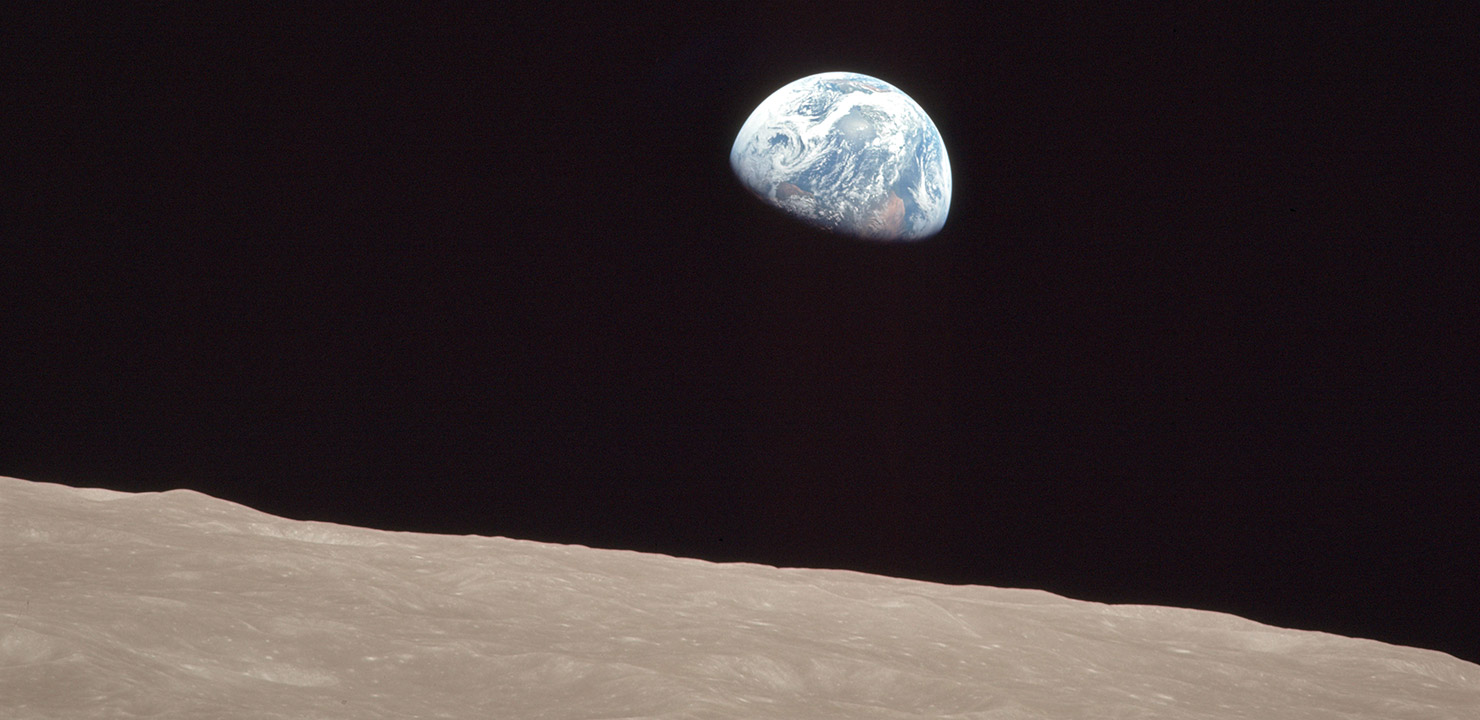
December marks the Anniversary of the First & Last of the Apollo Lunar Flights
December 2017 :
NASA’ s videotape (yes, videotape) on the flight of Apollo 11 mentions that, “if you were too young, or not born yet,” this is a good introduction to the first men on the Moon mission. Sadly, there are some, even within our own organization, who lament that their only Apollo mission during their lifetime was the finale, the Apollo-Soyuz coupling, where the two countries in essence finished the Cold War space competition.
Although we normally place the Apollo 11 landing as the extreme accomplishment, there were other, equally incredible parts to this historic time, and, surprisingly, two of them took place this month.
The second manned Apollo launch, and the first to leave Earth orbit, was Apollo 8. Launched December 21st, 1968, this was the first human spaceflight launched from the Kennedy Space Center. It was the first time astronauts were leaving the safety of Earth proximity and traveling for three days to the Moon. Frank Borman, James Lovell and William Anders were also the first astronauts to travel around the Moon, therefore being out of radio contact from mission control during each of its ten lunar orbits. When they became able to transmit back to Earth, as this was right before the Christmas holiday, they read from the Book of Genesis, afterwards wishing the world the happiest of the season. In addition, Bill Anders was the first human to observe the Earth from space, photographing it for all the world to see.
They returned to Earth on December 27th, after which they were named Time magazine’s Men of the Year; however, this honor paled in the fact that they had paved the way for the actual Moon landing before the end of the decade, fulfilling the promise that President John Kennedy had made.
Eight flights and six successful lunar landings later, the Moon was abandoned as a destination.
The last of these missions, Apollo 17, also took place in December, when Eugene Cernan, Harrison Schmitt and Ronald Evans blasted off on December 7th, 1972. It was the first night launch for Apollo, and became the last manned launch of a Saturn V.
This mission was to both sample material believed to be older than that of Mare Imbrium, and to attempt to verify any volcanic activity that might have occurred in the region. Apollo 17 broke several records during its time: It was the longest time spent on the Moon (3 days, 3 hours), longest moonwalks (lasting over 7 hours), the return of some of the very largest lunar samples, and the longest time in lunar orbit. They returned to Earth twelve days later, on December 19th.
Before leaving, Astronaut Cernan unveiled a plaque commemorating the achievements of all Apollo missions, and he expressed the hope that the Apollo program would be just the first step in the return of humanity to the Moon, “with peace and hope for all mankind.” We’ve never gone back.



